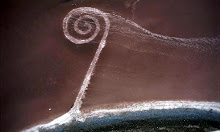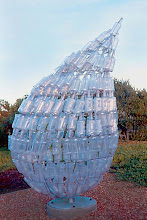 On Monday we spoke of Carl Andre's legacy in the minimalist field of art. To clarify, he's the man who was given upwards of a million dollars for a sculpture he made by stacking blocks he bought from home depot.
On Monday we spoke of Carl Andre's legacy in the minimalist field of art. To clarify, he's the man who was given upwards of a million dollars for a sculpture he made by stacking blocks he bought from home depot. This raises some particularly tickling points in the world of situation. The allure of this particular piece doesn't come from the physical work itself as much as it is defined by situation. The buzz that surrounds it lies in the minds of the viewer- hence, if it wasn't the work that Andre was grossly overpaid for, it wouldn't be much of anything to anyone.
This is a highly unique and specific example of situation art, in the realms of minimalism, but there's a lot more to be said about this than just that.
In Fried's chapter on the "good and bad" it struck me as a particularly good example of what I understood Hegel's idea of the "genuine infinite" to be. The bricks are in themselves a very determinate, negation based object. Yet, at the same time, the situation that it is in, that revolves around it, is so undeniably present at all times and is constantly in flux, that it truly may fit the incredibly bewildering definition by Hegel that Fried inserted in the book. That is, the idea of the object being both indeterminate and determinate at the same time, therefore making it genuine. Physically Andre's piece is very negated, yet in every other sense, it is not.
It's hard to say that his work qualifies for much of anything, but on the other hand it is very difficult to deny that his pieces do provoke a great deal of questioning and observation concerning the idea of situation and site-specific art.
For a little taste of another, more site-specific related piece, click on the link below:










No comments:
Post a Comment